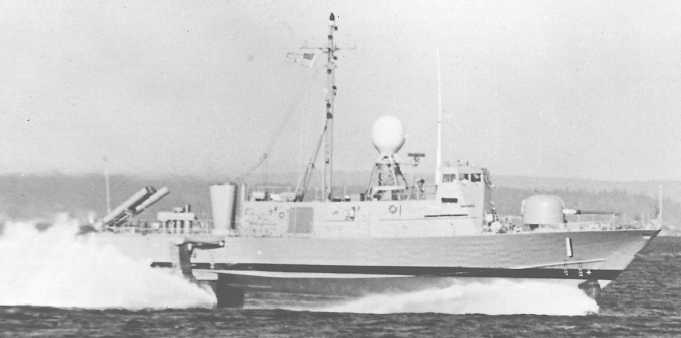| |
craft developed by the Navy. It displaces 16,600 to
18,700 tons. The size of the Trident submarine is
dictated by the larger size missile required for ranges
of 4,000 to 6,000 miles and the larger reactor plant
required to drive the ship. The submarine has 24
tubes for the Trident II missile and 4 torpedo tubes
located in the bow.
A nuclear-powered attack submarine, like that of
the Sturgeon class, displaces 3,800 to 4,700 tons and
has four torpedo tubes. The new Los Angeles-class
fast-attack submarines displace about 7,000 tons and
have four torpedo tubes. Notice in figure 19-9 how
much larger the SSBN is than the SSN. You can also
see the bow of a second Los Angeles-class SSN at the
top right of the figure. Although possessing different
missions, both are super-powered submarines.
Early submarines were named after marine life.
The first SSBNs, however, were given names of
persons well known in American history, like George
Washington, Patrick Henry, and Lafayette.
New fast-attack submarines (SSNs) are named
after American cities—like the Los Angeles, Baton
Rouge, and Memphis. The Tridents (SSBNs) are
being named after American states-like the Ohio and
the Michigan.
Other Combatants
Other ships classified as combatants are patrol
combatant ships, amphibious warfare ships, and mine
warfare ships.
PATROL COMBATANTS. —Patrol combatants
fall into two categories: patrol combatant (PG) and
guided-missile patrol combatant (hydrofoil) (PHM).
The patrol combatant was developed because of
increased emphasis on counterinsurgency and
unconventional warfare operations. The PG is
designed for good sea-keeping qualities, long
endurance, a high payload, and high speed
capabilities. Although the PG is not a torpedo boat, it
can operate in shallow coastal waters and is capable
of combating coastal shipping as well as enemy
torpedo boats.
The main propulsion plant of the gunboat uses a
combination of diesel and gas (turbine) (CODAG).
This combination achieves the greatest possible fuel
economy and maximum endurance time on station.
Two diesel engines drive the twin propellers during
maneuvering and cruising speeds, the gunboat’s
normal operating condition. When high speeds are
needed, the diesels are declutched and the gas
turbine is clutched to the propeller shafts for speeds
over 40 knots.
The PG is constructed of aluminum and fiberglass,
is 165 feet long, has a beam of 24 feet, and displaces
225 to 245 tons. Its armament consists of one 3"/50-
caliber gun, one 40-mm gun, and four 50-caliber twin
machine guns.
The newer patrol combatant ships are guided-
missile patrol combatant (hydrofoil) ships (PHM).
Figure 19-10 shows the first of the class,
134.190
Figure 19-10.-Uss Pegasus (PHM-1), a patrol hydrofoil missile ship.
19-11
|

